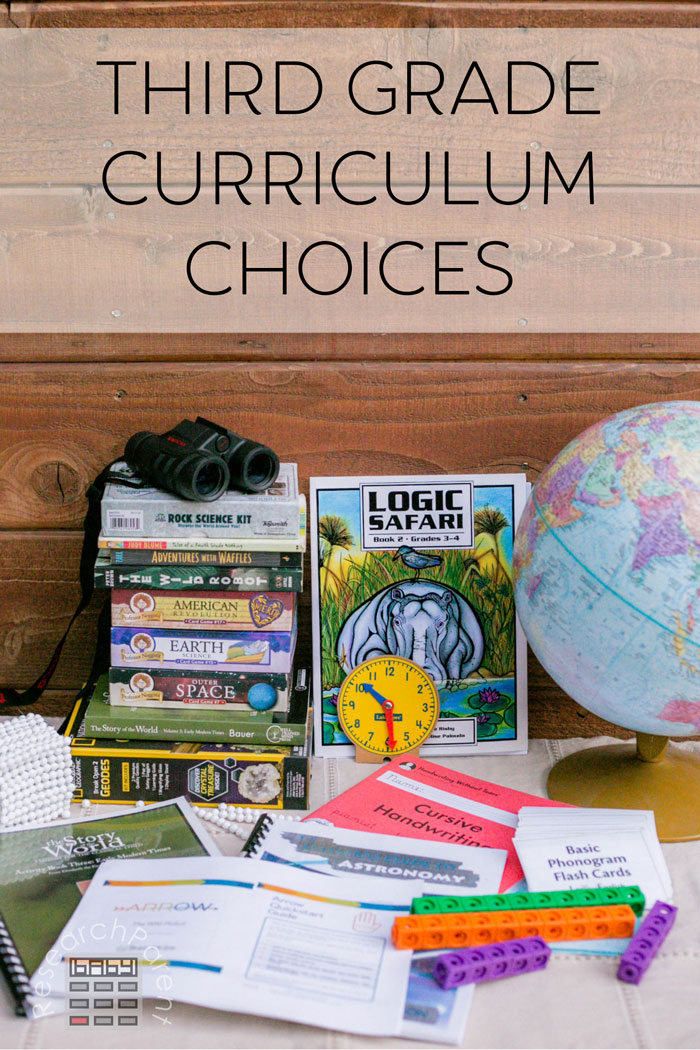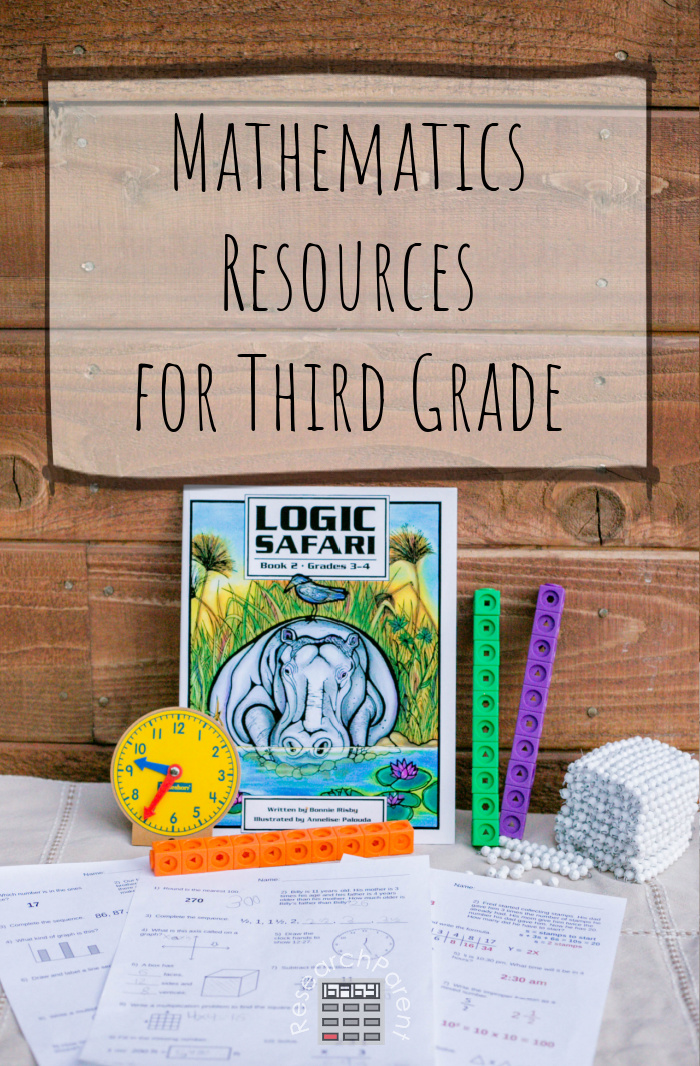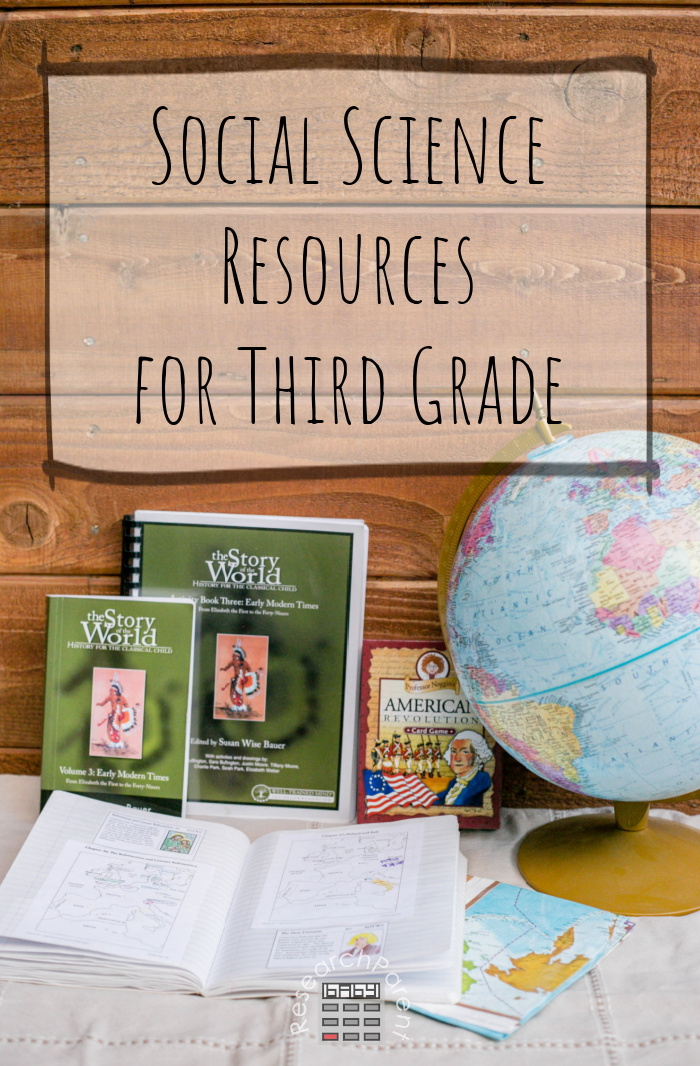In my experience, I have found third grade to be a year of increased maturity. As their reading skills improve, kids are able to work more independently. This lets them play a bigger role in navigating their education. They can choose what they want to read and find interesting projects to work on by themselves. These third grade curriculum choices reflect my desire to leave my kids plenty of free time.

Third graders typically no longer need you to sit and read them the instructions for every assignment. Now you can put a worksheet in front of them and say, “Please work on this.” Not that I assign independent work very often.
Personally, I prefer to be very hands-on in the part of my kids education that I specify. We do as much as possible as a family. This often involves me reading aloud or doing projects with my children ranging from 3 to 10 years old. However, it is nice being able to give the third grader work to do on their own occasionally.
I still like to limit my child’s formal school work to 2 hours a day 4 days each week. This leaves plenty of time for their own interests. Below are my third grade curriculum choices based on what our family has done in the past.
Language Arts

As in all of elementary school, Language Arts in 3rd grade consists primarily of reading in our house. I let my kids stay up as late as they want in their beds if they are reading. If I have to invest in something for my child’s education, I consider books to be worth it. I always try to purchase items from used book stores or off Ebay. A used book is still a new book to a child. I think it’s important for kids to feel like at least some of the books they read are their own.
I also read A LOT to my children. We listen to audiobooks in the car and I typically read aloud as part of almost every meal. I want to expose my kids to as much good literature as possible. By third grade, they usually have the attention span to enjoy really good books. When choosing books to read aloud to your child, remember you can always choose above a child’s reading level.
By third grade, I try to work on my child’s spelling a little more than in previous years. We also spend a little more time working on writing projects. Here are the Language Arts resources I use in third grade.
- To find good books for your child (both or read-alouds and read-alones), you can check out my list of the best books for early elementary and mid elementary. I also recommend trying to get your child hooked on a book series at their reading level or just above. A love of reading is the cornerstone of a solid education in my opinion. Therefore, helping my kids find books they enjoy is a priority.
- I also like using our read-alouds to have my kids do copywork. We use this practice to learn the mechanics of writing like grammar, spelling, and punctuation. I frequently try to choose read alouds that have a Bravewriter Arrow Guide that goes with them. Although you don’t need a purchased product to get the benefit of copywork, the Arrow guides help maximize the benefit of copywork with the minimum of effort. Not only do they cover the mechanics of writing, but they help kids learn to be better writers. Depending on the guide, they teach concepts like opening hook, vivid verbs, literary devices, dialect, and much, much more.
- This is not included as part of the Arrow guides, but I frequently will type out the passage they copied and make some mistakes for the child to find. In third grade I will make them fix capitalization, ending punctuation, quotation marks, apostrophes, and some simple spelling mistakes. This fancy word for this practice is reverse dictation.
- Starting in third grade, I usually try to do dictation a couple times a month using their copywork. I will read the first sentence of the copywork passage after they have copied it and found mistakes earlier in the week. They will do their best to write the sentence as accurately as possible. Then they will get to check their work to see how well they did on things like punctuation and spelling.
- As in second grade, I use the Logic of English’s phonogram flashcards with all my kids as a group to make sure they are familiar with all the common letter combinations in the English language and the sounds they make. I feel like this helps a lot with spelling. At the very least, it makes it easier for me to give my child clues for how to spell unfamiliar words rather than just telling them. I think this makes them more likely to remember how to spell the word in the future.
- I admit that I am not the best at getting through these workbooks, but so my kids have some familiarity with the spelling of common words, I occasionally use, Evan Moor’s Building Spelling Skills: Grade 3. We definitely do not do every worksheet, but I try to at least show my kids each of the spelling words and explain to them how they are spelled. First we break the word apart into syllables. Then we “Say to Spell” by pronouncing the word wrong if it makes it easier to spell. Next I give them clues for the uncommon spellings using the Phonogram Flashcards mentioned above. We underline any multi-letter phonograms in the written word and double underline silent E’s. This is a modified version of a spelling technique we learned the year we used Logic of English’s curriculum. We don’t follow this procedure exactly, but the official Logic of English guidelines can be found on this spelling bookmark.
- For handwriting, I have my third grader use Handwriting Without Tears: Cursive Handwriting. However, this is one of those things which I am not super strict about completing. Rather than ripping the pages out of the book and put them in my homeschool crate system as I have done in the past, this year I am experimenting with writing dates on the top of the pages. These “due dates” let my kids know where they should be to finish the book by the end of the school year. That way the child can have all their work in one place, and if they fall behind they can catch up without me having to hunt down skipped sheets from our folders.
- To give my child an introduction to grammar, in the past I have had my third graders complete this Grammar Lapbook by Undercover Classroom from Teacher’s Pay Teachers. Some of it is a little advanced, so it is also a good option for fourth grade instead.
- In our house, we are big proponents of the Bravewriter Lifestyle. We follow many of their recommended practices such as Poetry Tea Time and Friday Freewrites. I have used their Jot It Down guide as inspiration for getting my kids doing 2 or 3 writing projects throughout the year. If your child is comfortable writing, you might want to thing about the Partnership Writing guide instead which is a very similar, but a little more advanced.
- Our family really enjoys Mrs. Wordsmith’s Storyteller’s Word-a-Day for ages 7 to 11 which features a bunch of really great vocabulary with fun visual imagery to help kids remember the meanings. Definitely not necessary by any means, but it is a fun way to get kids learning cool new words to use in their writing.
Math

As in all of elementary school, I have a minimalist’s approach to math. I want my children to understand math concepts, but I am not rigid about having my children do math daily. Rather, the only requirement is that they do 10 problem each week that I have chosen based on looking through a number of different curricula. We play games to practice math facts when we can fit it into our schedule. I also occasionally have them do a supplemental math or logic worksheet, but on busy weeks, these get skipped.
Here are some of my recommendations for third grade.
- The cornerstone to my approach to math is my homemade free minimalist math curriculum for third grade. These worksheets cover the same math concepts found in a traditional curriculum without all the repetition.
- I like to make math as visual as possible while kids are learning to regroup (what used to be called carrying and borrowing). Therefore, I recommend using either a place value set, interlocking cubes, or both. I made my own set of Montessori style beads to teach this concept. It definitely took a considerable amount of time, but I use these beads with my kids in third grade and younger all the time.
- A teaching clock is very helpful when you are teaching your child to tell time. Alternatively, I recommend doing this carefully, but you can get a cheap clock from a store like Target, break the glass, and move the hands yourself. This is what I did for a couple years and it had the added advantage of automatically moving the hour hand when you manually moved the minute hand, which shows how the two are connected.
- Every year, I put a logic puzzle worksheet in my homeschool crate system for each week. My kids love these puzzles and I feel like they help them develop the right attitude toward math. They get them thinking critically while having fun.
- To help my kids memorize their multiplication facts, we like to play the games in Multiplication Facts that Stick by Kate Snow. This is a 10 week program, but we spread it out over the full year. I always intend to have my kids do one review worksheet per week, but about halfway through the year, we usually stop doing the worksheets entirely.
- Clumsy Thief is a really fun game for third graders that helps them get more comfortable adding to 100.
Science

It is important to me that our whole family study the same subjects for science and history. I would probably lose my mind if all my kids were doing different things. Therefore, if you have an older child, choose the same subject that your older child is learning for your third grader.
If your third grader is your oldest, here are our family’s choices for science in third grade:
- My kids love Sassafras Science. It is a living book curriculum that follows the adventures of two pre-teen twins named Blaine and Tracy. We listen to the story and do the lapbook that goes along with it. My kids each choose information that they find interesting from the story to write in their lapbooks. I write the sentences for them on a separate sheet of paper. Then they copy the sentences into their lapbooks. (You can find a more detailed review here.) If you have been following the Sassafras twins since 1st grade, then in third grade you will be on Volumes 5 and 6, Geology and Astronomy. Our family has been waiting over a year for Volume 6 which was just released. This coming year I will be doing Volume 6: Astronomy with my 1st, 3rd, and 5th graders. If you have not done Sassafrass before, I recommend starting at the beginning of the series. They do not need to be done in order as they always do recaps of previous books. However, the story line will make more sense and be more enjoyable if you do them in order.
- When we run out of Sassafras, or sometimes just to supplement, I personally really like the REAL Science Odyssey curriculum from Pandia Press. Their curricula cover a wide age range, so feel free to choose the one that most appeals to you. Their recommended third grade curricula is Chemistry. I just completed this chemistry curriculum with my kindergartner, 2nd, and 4th graders and I highly recommend it.
- I like to make science as hands-on as possible. If you are going to be studying geology and astronomy with the Sassafrass curriculum, I recommend investing in a mini-rock collection. A pair of binoculars are useful for star-gazing and wildlife viewing (we have several pairs and these are our favorite). Geodes are also fun. If you can afford it, a telescope is great to have for looking at the moon, planets, and comets.
- I also really like Prof. Noggin games for reinforcing science learning. There are games on a wide variety of topics such as Earth Science and Space. (Check the price on Rainbow Resource as well as their prices are often much cheaper.)
Social Science

So far, we have only ever done Story of the World for history. After completing the whole series, I think it is a great curriculum to introduce kids to history. Since we just completed the four year cycle, this year we are planning to try History Quest for variety. However, at present, Story of the World is our social science curriculum choice.
If you have an older child, choose the same era in history for your younger child (Ancients, Middle Ages, Early Modern, and Modern). If your third grader is your oldest and you started the cycle in 1st grade, then you will be on Volume 3: Early Modern history in third grade.
Here are my recommended resources for Social Science in third grade:
- If you started Story of the World in first grade, you will need Story of the World Volume 3: Early Modern Times book and Activity Guide in third grade. Please note that even though the activity guide is filled with several wonderful suggestions, we do not do it all. Pretty much all we do in third grade is read the chapter, talk about it, do some map work, a little coloring, and copy a sentence related to the reading. I would love to make history come more alive for my kids. However, fitting that into our schedule hasn’t always been the easiest thing to accomplish with busy schedules.
- If you choose, you could switch out the physical book for the audiobook which is narrated by Jim Weiss. Even though Jim Weiss is one of our favorite storytellers, personally I choose to read-aloud instead. That way I can make sure my kids are paying attention and I can talk to them about the chapters afterwards.
- I do not use them, but there are also tests that you can purchase to go along with the curriculum if you choose.
- You will likely want either a globe or world map to refer to throughout the year. I’m sure not everyone has the space for it, but we have a laminated dry-erase wall map we got at Costco that we use all the time. It is great being able to write on it to circle locations and show paths.
- Third grade is about the age that I start watching CNN10 with my kids every morning. This is a 10 minute non-partisan look at the day’s news. Technically, the younger children in our family are welcome to watch too. They frequently watch with us, but third grade is about the age I start having interesting conversations with my kids about current events.
I hope some of these third grade curriculum choices are helpful to you! There are so many wonderful options to available, you pretty much can’t go wrong. Enjoy your year with your third grader!
Related Links
Homeschooling Articles
Favorite Homeschool Resources
Learning Activities for Kids
The post Third Grade Curriculum Choices appeared first on ResearchParent.com.
